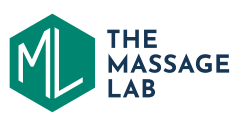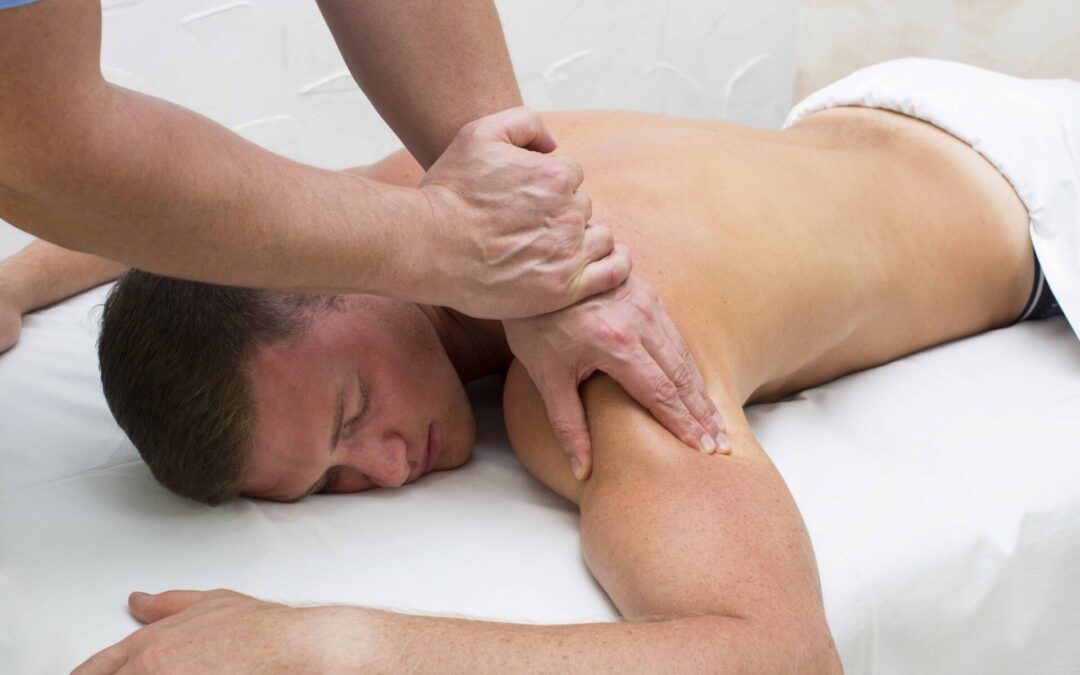Deep Tissue Self-Massage
Deep tissue self-massage, also known as Tiefengewebs-Selbstmassage, is a therapeutic technique that focuses on releasing tension, reducing pain, and promoting relaxation by targeting the deeper layers of muscles and connective tissue. This form of massage offers numerous benefits for both physical and mental health, including pain relief, improved flexibility, stress reduction, enhanced circulation, and injury prevention. In this article, we will explore these benefits in detail and provide a step-by-step guide on how to effectively perform Tiefengewebs-Selbstmassage.
Benefits of Deep Tissue Self-Massage
Tiefengewebs-Selbstmassage provides a wide range of benefits that positively impact both the body and mind. Let’s delve into some of its key advantages:
-
Pain Relief: One of the primary benefits of deep tissue self-massage is its ability to alleviate chronic pain. Conditions such as fibromyalgia, arthritis, and sports injuries can cause ongoing discomfort, but by targeting the deeper layers of muscles, deep tissue massage helps reduce inflammation, break up scar tissue, and release muscular tension, ultimately leading to pain relief.
-
Improved Flexibility: Regular practice of Tiefengewebs-Selbstmassage can greatly enhance flexibility and range of motion. By working on the deep layers of muscles and fascia, this technique effectively breaks up adhesions and knots, making it easier for muscles to move and stretch properly.
-
Stress Reduction: Deep tissue self-massage has been proven to promote relaxation and reduce stress levels. Through the release of endorphins, serotonin, and oxytocin, this technique helps improve mood, induce a sense of calm, and reduce anxiety, providing a much-needed mental and emotional reprieve.
-
Enhanced Circulation: Tiefengewebs-Selbstmassage plays a crucial role in improving blood flow and circulation throughout the body. This increase in circulation benefits the delivery of oxygen and essential nutrients to the muscles, as well as aids in the removal of waste products and toxins from the body, resulting in improved overall health.
-
Injury Prevention: Regular deep tissue self-massage can be instrumental in preventing injuries by maintaining optimal muscle and connective tissue condition. By addressing muscular imbalances, reducing tension, and increasing flexibility, this technique minimizes the risk of strains, sprains, and other soft tissue injuries, allowing individuals to engage in physical activities with confidence.
How to Perform Deep Tissue Self-Massage
Now that we understand the benefits, let’s explore a detailed step-by-step guide on how to effectively perform Tiefengewebs-Selbstmassage:
1. Preparation
Before beginning your deep tissue self-massage session, it is important to adequately prepare your body and environment:
- Find a quiet and comfortable space free from distractions to ensure you can fully relax.
- Choose a firm and comfortable surface, such as a yoga mat or padded surface, to lie on.
- Keep a small towel or blanket nearby to support your head and neck if needed.
- Apply a natural massage oil or lotion to your skin to reduce friction and enhance the gliding movement of your hands.
2. Warm-up
To increase blood flow and prepare your muscles for deeper massage techniques, start with a proper warm-up:
- Perform light aerobic exercises, such as jogging in place or doing jumping jacks, for 5-10 minutes. This will effectively increase circulation throughout your body.
- Utilize a foam roller or massage ball to roll over larger muscle groups, including the calves, thighs, and back. This helps further warm up the tissues, making them more receptive to massage.
3. Targeted Massage Techniques
Once your muscles are adequately warmed up, you can begin targeting specific muscle groups using deep tissue self-massage techniques:
-
Effleurage: Start with long, sweeping strokes using the palms of your hands or fingertips. Apply moderate pressure and move slowly along the muscles, following the direction of the muscle fibers. This technique helps warm up the muscles further and prepares them for deeper work.
-
Friction: Use your fingers, thumbs, or knuckles to apply deep, circular motions on specific areas of tension or knots. Apply steady pressure and gradually increase it as tolerated. Friction helps break up adhesions and scar tissue, promoting improved muscle function.
-
Stripping: Place your fingers or thumbs on either side of a muscle and apply deep, gliding pressure along the length of the muscle. This technique helps lengthen muscle fibers and release tension, resulting in increased flexibility.
-
Trigger Point Release: Locate tender points or knots in the muscles and apply sustained pressure using your fingers, thumbs, or elbows. Hold the pressure for 30-60 seconds or until you feel a release in tension. Trigger point release is highly effective in relieving pain and restoring proper muscle function.
4. Self-Care After the Massage
After completing your Tiefengewebs-Selbstmassage session, it is essential to take care of your body:
- Hydrate your muscles by drinking plenty of water, as this promotes the elimination of toxins and helps with muscle recovery.
- Apply a cold pack or ice to any areas that may feel sore or inflamed after the massage. This helps reduce inflammation and provides relief.
- Take a warm bath or shower to further relax your muscles and enhance the overall benefits of the massage. The warm water promotes relaxation and can help alleviate any remaining muscle tension.
Conclusion
In conclusion, Tiefengewebs-Selbstmassage is a powerful therapeutic technique that offers numerous benefits for both physical and mental well-being. By targeting the deeper layers of muscles and connective tissue, this massage technique provides pain relief, improves flexibility, reduces stress, enhances circulation, and prevents injuries. By following the step-by-step guide provided in this article, you can easily incorporate Tiefengewebs-Selbstmassage into your self-care routine and experience its transformative effects on your overall health.
ve a clean and soft surface to lie on, such as a yoga mat or a padded massage table.
– Gather any necessary tools or props, such as massage balls, foam rollers, or massage oils.
2. Warm-up
Before diving into deep tissue self-massage, it’s essential to warm up your muscles to prevent injury and increase blood flow. Here are some warm-up exercises you can do:
- Perform light cardiovascular exercises, such as brisk walking or cycling, for 5-10 minutes.
- Engage in dynamic stretches that target the muscles you’ll be massaging, such as arm circles, leg swings, or shoulder rolls.
3. Massage Techniques
When performing Tiefengewebs-Selbstmassage, it’s important to use the proper techniques to effectively target the deep layers of muscles and connective tissue. Here are some techniques you can try:
- Effleurage: Use long, sweeping strokes with moderate pressure to warm up the muscles and distribute massage oil.
- Friction: Apply deep pressure in circular motions to break up adhesions and knots in the muscles.
- Stripping: Use your fingers, knuckles, or a massage tool to apply deep pressure along the length of the muscle fibers.
- Trigger point release: Locate trigger points (areas of tightness or knots) and apply sustained pressure to release tension.
4. Self-Care After Massage
After completing your Tiefengewebs-Selbstmassage session, it’s important to take care of your body to maximize the benefits and promote recovery. Here are some self-care practices you can follow:
- Drink plenty of water to stay hydrated and flush out toxins released during the massage.
- Apply a cold pack or ice to any areas that feel sore or inflamed to reduce inflammation.
- Take a warm bath or shower to relax your muscles and promote further relaxation.
- Practice gentle stretching or yoga to maintain flexibility and prevent muscle stiffness.
FAQ
Q1: Can Tiefengewebs-Selbstmassage help relieve chronic pain?
A1: Yes, Tiefengewebs-Selbstmassage can help alleviate chronic pain by reducing inflammation, breaking up scar tissue, and releasing muscular tension.
Q2: How does Tiefengewebs-Selbstmassage improve flexibility?
A2: Tiefengewebs-Selbstmassage improves flexibility by breaking up adhesions and knots in the deep layers of muscles and fascia, allowing muscles to move and stretch more easily.
Q3: Does Tiefengewebs-Selbstmassage reduce stress levels?
A3: Yes, Tiefengewebs-Selbstmassage promotes relaxation and reduces stress by triggering the release of endorphins, serotonin, and oxytocin, which improve mood and induce a sense of calm.
Q4: Can Tiefengewebs-Selbstmassage help prevent injuries?
A4: Yes, regular deep tissue self-massage can help prevent injuries by addressing muscular imbalances, reducing tension, and increasing flexibility, thus minimizing the risk of strains, sprains, and other soft tissue injuries.

